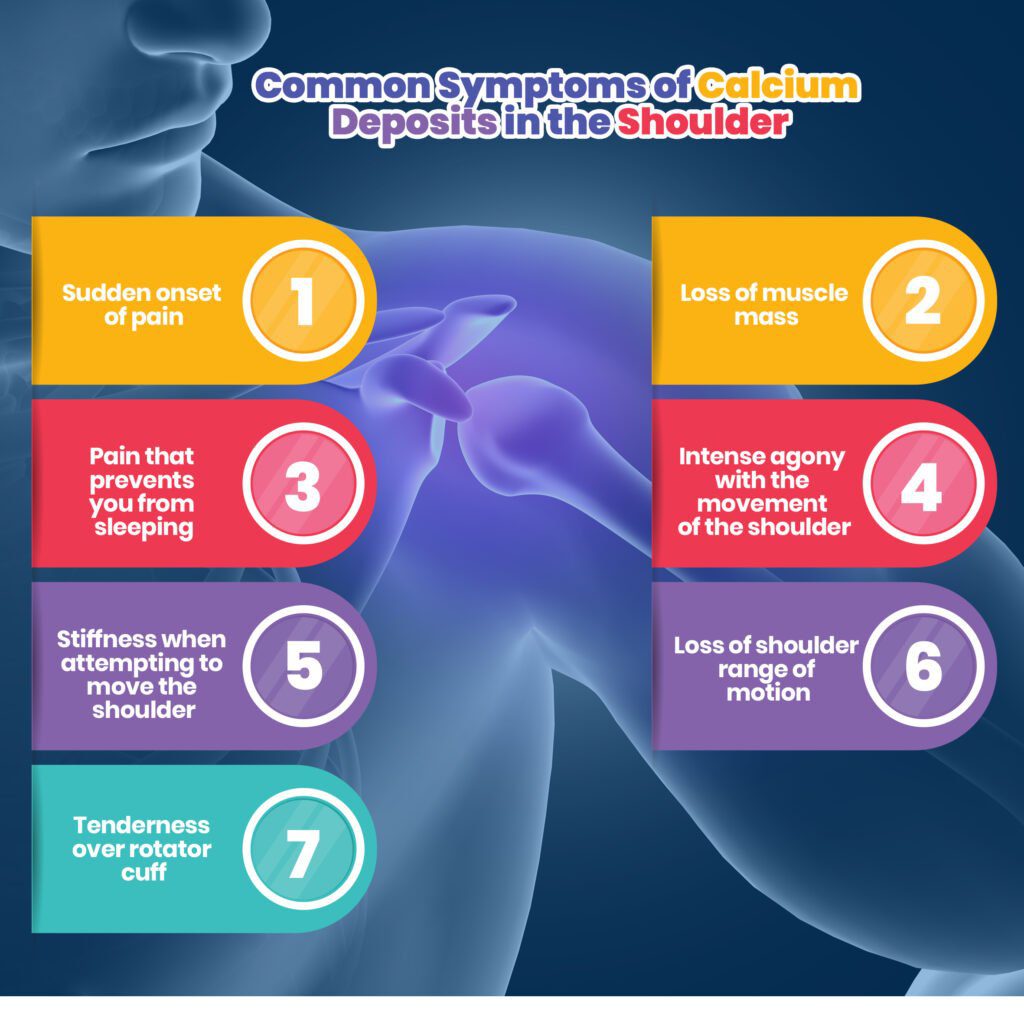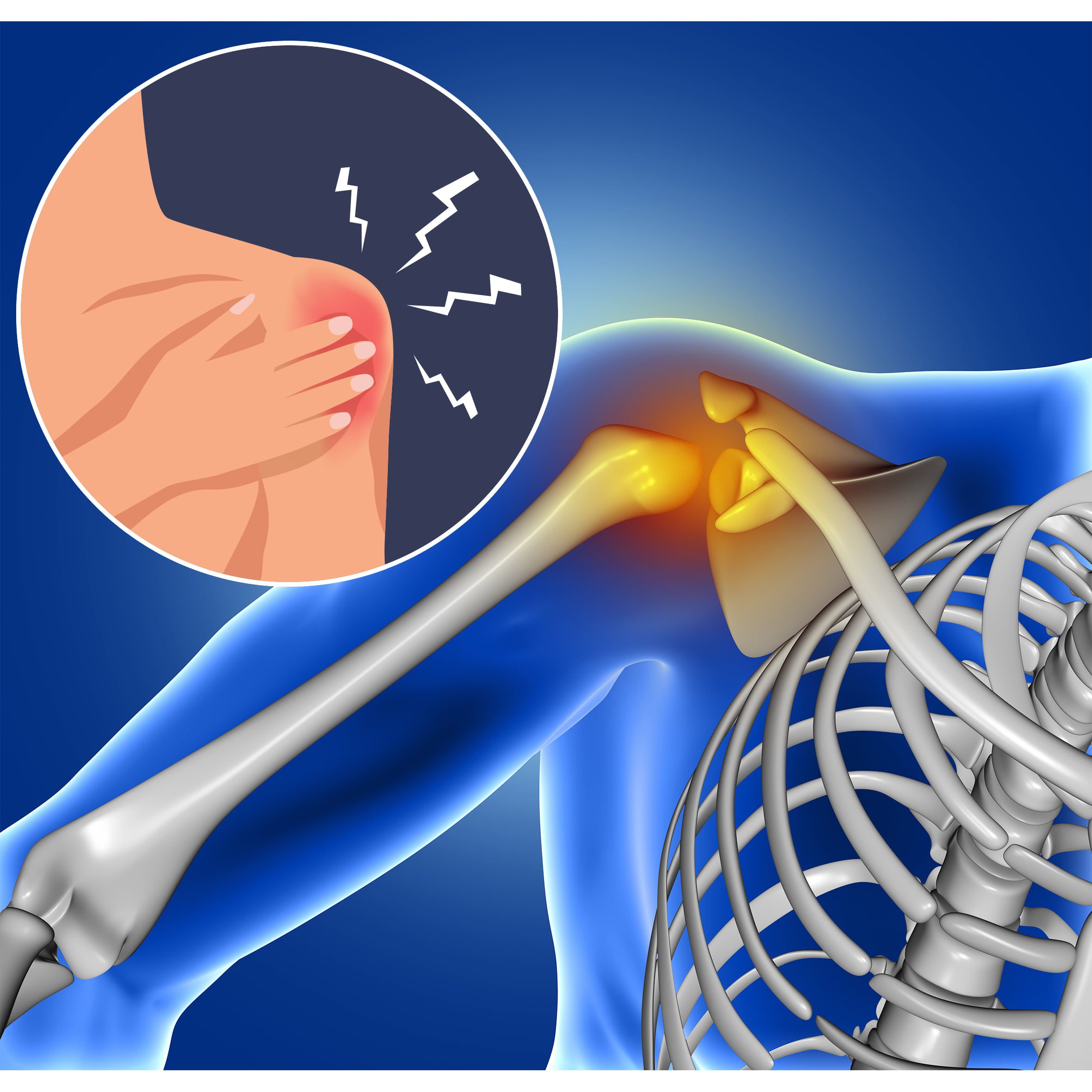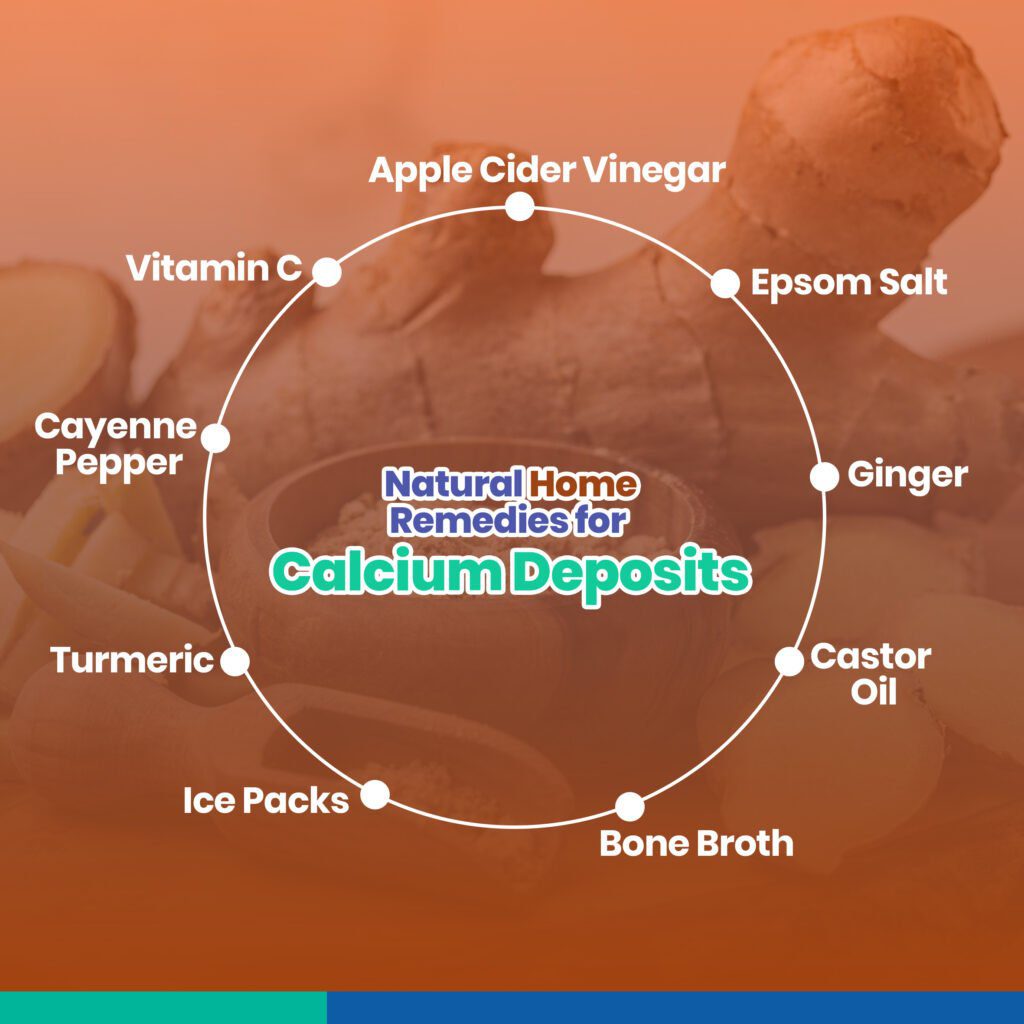There are many calcium deposits in shoulder natural remedies, and we will explain the best of them in this article. The most abundant mineral in the body is calcium, which is often present in the bloodstream. Sometimes, calcium can be in excess in the body, leaving unwanted deposits in the body system, especially the shoulders. Although calcium is essential for the health of the muscles, blood circulation, digestion, and the nervous system, deposits of this mineral in other body parts may lead to painful medical conditions if not given proper attention.
Table of Contents
The most acknowledged treatment for this condition is surgery. However, there are other natural treatments you can try. As a matter of fact, studies have shown that about 75 percent of natural treatments have been successful against calcium deposits in the shoulder.
While there are various home remedies available for the treatment of calcium deposits in the shoulder, there are some simple steps you can follow that will give you maximum results in a couple of weeks.
What is Calcium Deposit?
Otherwise called Calcific Tendonitis in medical terms, calcium deposit is a condition that occurs when deposits from calcium build up in your muscles or tendons. Although this condition can occur in any part of the body, it is usually common in the rotator cuff.
A rotator cuff is a group of tendons and muscles that surround the joint in the shoulder. The job of the cuff is to keep the head of your upper arm bone firmly within the socket of the shoulder. When there is a strain in the rotator cuff – like calcium deposits, for example – there is often an ache in the shoulder, which can be quite painful.
What are the Common Symptoms of Calcium Deposits in the Shoulder?

The most common symptoms of calcific tendonitis include the following. However, these symptoms are not exclusive to calcium deposits alone. When you have them, do not immediately assume that you are suffering from calcific tendonitis. These symptoms may be a result of other conditions. It is advisable to first consult your doctor to make a proper diagnosis of the condition before going ahead with the treatment.
- Sudden onset of pain
- Loss of muscle mass
- Pain that prevents you from sleeping
- Intense agony with the movement of the shoulder
- Stiffness when attempting to move the shoulder
- Loss of shoulder range of motion
- Tenderness over rotator cuff
Calcium deposits are often built up in three different stages which are known as:
- The pre-calcification stage: In this stage, the body goes through some cellular changes around the area where there is the eventuality of calcium buildup.
- The calcific stage: At the point, the calcium is beginning to be released from the cells and it’s starting to build up. In this stage, as the calcium is being released by the cells, the body tries to reabsorb it. This is often the most painful part of the process.
- The post-calcific stage: This is the stage after treatment has been carried out. The calcium deposit disappears, the pain is relieved, and a healthy tendon takes its place.
However, you need to understand that it is also possible to have the condition without any visible or noticeable symptoms.
Who is at Risk of Calcium Deposits in the Shoulder?
Although calcium deposits in the shoulder can affect anyone, it is common among a set of people when they have attained a certain age. The condition seems to be predominant among people between the ages of 40 to 60 years old. However, it has been discovered that calcific tendonitis affects women more than men. It is quite a surprising discovery. One would think that the condition would affect people who do heavy-duty works that involve the constant use of the upper limbs, which, of course, is common among men. However, such is not the case as discovered by researchers. Overhead athletes have also been thought to be at great risk of suffering from calcific tendonitis, but again, the facts have proven the speculators wrong.
The buildup of deposits from calcium may be the result of one (or more) of the following factors:
- Aging
- Tendon damage
- Genetics
- The deprivation of oxygen to the tendons
- Abnormal growth of cells
- Abnormal activity of the thyroid gland
- The chemicals produced by the body to fight inflammation
- Metabolic disease, such as diabetes
Natural Remedies For Calcium Deposits
1. Epsom Salt
This is also known as magnesium sulfate. The magnesium in the salt will help reduce the swelling and inflammation in your tendons.
You will need:
- 1 cup of Epsom salt
- Water
Directions:
- Fill your bathtub with water.
- Add the full cup of Epsom salt to it and wait till it totally dissolves.
- Immerse yourself in the water for 15 to 20 minutes.
- Do this at least once every day.
2. Apple Cider Vinegar
This contains powerful anti-inflammatory properties because of the presence of acetic acid in it. It is known to help reduce pain, swelling, and inflammation.
You will need
- Half cup of raw apple cider vinegar
- Half cup of warm water
- A clean washcloth
Directions
Mix half a cup of raw apple cider vinegar with half a cup of warm water.
Then soak the clean washcloth in the mixture, wring it and gently place it on the affected area surrounding the tendon. Allow the cloth to remain there for 20 to 30 minutes.
Remove the washcloth after about half an hour.
Also, for better results, you can also mix a tablespoon of apple cider vinegar in a glass of water and drink it.
You can apply the mixture of apple cider vinegar and warm water three times daily.
3. Ice Packs
This helps reduce symptoms of swelling and inflammation. It also helps in numbing affected areas and reducing pain.
You will need
- An ice pack
Directions
Place an ice pack close to the area affected around the tendons.
Let it remain there for at least ten minutes before taking it off.
This should be done 2 to 3 times daily.
4. Bone Broth
This contains nutrients such as glucosamine and chondroitin which help in healing your tendons speedily.
You will need
- A bowl of freshly prepared bone broth
Directions
Eat a bowl of freshly prepared bone broth. Take it once every day.
5. Cayenne Pepper
Capsaicin is a major component of cayenne pepper. This capsaicin exhibits analgesic activities that alleviate inflammation and relieve pain.
You will need
- 1 teaspoon of powdered cayenne pepper
- 2-3 teaspoons of olive oil
Directions
Add a few teaspoons of olive oil to a teaspoon of powdered cayenne pepper.
Apply this mixture gently to the affected area by massaging it.
Allow the mixture to remain there for at least 30 minutes before washing it off.
Also, you can mix powdered cayenne pepper with water and honey and then drink it.
Apply the process 2 – 3 times daily.
6. Vitamin C
This has the power of speeding up the healing of inflamed tendons. This power could be due to the anti-inflammatory properties contained in it, including its ability to synthesize collagen.
You will need
100 – 500 mg of Vitamin C
Directions
Eat foods that are particularly rich in Vitamin C, such as citrus fruits, spinach, and kale. You can also take additional supplements, but make sure you consult your doctor first.
Vitamin C must be incorporated into your daily diet.
7. Ginger
This possesses powerful anti-inflammatory and analgesic properties due to the gingerol it contains. Gingerol can help manage inflammation, pain, and other symptoms of calcium deposits.
You will need
- 1 – 2 inches of ginger
- 1 cup of hot water
Directions
Add the ginger to the cup of hot water already provided.
Allow the mixture to steep for about 5 or 10 minutes.
Drink the mixture.
You can also soak a cup in the mixture and place it on the affected area.
Drink the mixture twice daily for faster results.
8. Castor Oil
The ricinoleic acid in castor oil possesses anti-inflammatory and analgesic properties that can help relieve inflammation and pain.
You will need
- 1 tablespoon of cold-compressed castor oil
- A warm compress
Directions
Pour a tablespoon of cold-compress castor oil into your palms.
Massage it gently around the affected area around the tendon.
Place a warm compress over it and allow it to remain there for about 20 minutes.
Take off the compress and rinse the oil off your body.
Do this twice daily.
9. Turmeric
This contains curcumin which has anti-inflammatory and analgesic properties that can help in healing calcium deposits and relieve its symptoms.
You will need
- 1 teaspoon of turmeric powder
- 1 glass of hot milk
Directions
- Add a teaspoon of turmeric powder to a glass of warm milk.
- Stir the mixture well and then drink the concoction.
- Also, you can make a paste with the turmeric powder by adding little water to it and applying it on the affected area.
- This process should be done once daily.
Other Simple Treatment Methods for Calcium Deposits in Shoulder
The treatment process for calcium deposits of the shoulder is almost the same as that for the treatment for impingement syndrome of the shoulder. Although in the case of calcific tendonitis, there are some other added options.
1. Exercise/Physical Therapy
Constantly exercising the body can help prevent stiffness in the shoulder. Stretching can also help too. One of the most common causes of calcium deposits is a frozen shoulder. When there is not constant activity in the joint of the shoulder, calcium can easily be deposited in the rotator cuff. Therefore, specific exercises can help keep the shoulder more active and reduce the burden on the tendons, especially the ones affected by the problems. This simple step has worked a lot of wonders in making calcium deposits in the shoulder disappear.
2. Anti-inflammatory Medications
These are those drugs whose major work is to relieve pains. Some of those drugs include ibuprofen, naproxen, diclofenac, etoricoxib, mefenamic acid, celecoxib, high-dose aspirin and so on. These medicines can help decrease the pain resulting from calcium deposits. Although there has not been any study to show a significant cure in the condition by the use of these medications, symptoms from patients have considerably lessened from the use of the drugs. However, you are strongly advised to not take any anti-inflammatory medication (or any drug for that matter) without first informing your doctor and getting the assurance that it is safe to use. Self-medication is very dangerous and may result in something a lot more severe. Always listen to your doctor’s advice before making any self-treatment.
3. Application of Heat and Ice
Many people do not know that applying moist heat to the affected area of the tendon can help relieve pain in a tremendous way. Even without taking any drug or supplement, placing a washcloth in hot water and then placing it on the affected area will deliver warmth to the shoulder and lessen the pain in the tendons. In the same manner, ice can be as effective in relieving pain as much as heat it. Placing ice packs on the affected area can also reduce pain. Therefore, in this case, it’s all about what method is your favorite.
4. Surgical Treatment
This, in many cases, should be the last resort. It is reserved only for people who do not find relief even after months of natural and simple treatment steps. If after two or three months, there is no relief in pain from calcium deposits in the shoulder, then surgery will be the only solution.
Calcium deposits in the shoulder can be extremely painful. It is highly advised to go for tests and medical checkups at the first sign of its symptoms. It is easier to treat it when the condition is still in the early stage.
Post Disclaimer
The information contained in this post "Calcium Deposits in Shoulder: Natural Remedies" is for educational purposes only. Always consult your primary care doctor before using the remedies that are provided. The information is provided by The Hidden Cures and while we do timely, in-depth research on the information that we provide to you, everything stated may not be up to date or accurate from the time it was written.

